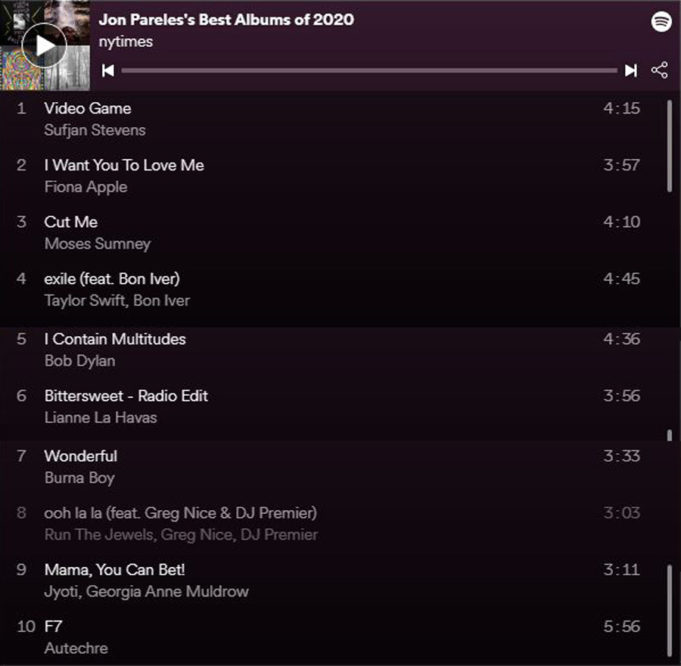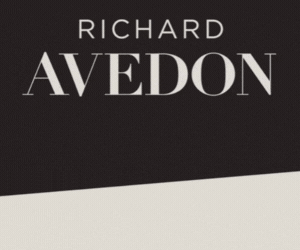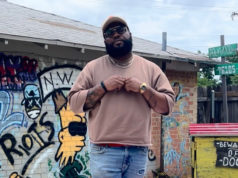We all know this, but it’s worth repeating. Stop buying new music only from year-end lists. Unless it’s local. Then buy all of it.
Fair warning: You’ll be reading our year-end list of Fort Worth favorites in a week or so. Until then, please do what you can with your fat/phat $1,200 Trump check from 200 years ago that I’m sure you’re still stretching and save it for local music. There is a ton of quality stuff here in our backyard which is just as good if not better than what you’ll find between the pages of The New York Times or The New Yorker or on Pitchfork. What I’d like to chat about today is that chasm: How do workaday artists transcend the “local” tag and become part of the national conversation? (Spoiler alert: They don’t!)
Jon Pareles has been a pop critic at the Times since I was in high school, and I’m old enough to remember National Enquirer covers with Elvis on them. I stopped reading Pareles, and the rest of the Times’ arts coverage, about 20 years ago, after the Old Gray Lady repeatedly refused to not even shit on but even acknowledge my professional advances. “What?!” I raged to myself, crying in my attic bedroom, surrounded by dirty McDonald’s wrappers and empty bottles of $2.17 Night Train. “You mean dumb jocks who know English and can type fast aren’t welcome on your staff?! I’m canceling you!” And this was long before cancel culture took off. #pioneer #yourewelcome
Thinking of the chasm between the haves and have-nots in our culture, I go back to Sam Anderson. When I asked the Quaker City Night Hawks co-frontman why his band wasn’t receiving any airplay on KXT — a bona fide terrestrial radio station that actually spins a ton of local tuneage — he said he didn’t know what else he had to do. His business people had been sending tracks to the Dallas studio for years. Still, no airplay. “Do we gotta bake ’em a cake?” Sam asked. And it’s true. WTF do I have to do for The New York Times to notice me? Sorry, I mean, What do local musicians all over the globe but especially here have to do to gain an audience with Jon Pareles? Understand that mailing him a CD is basically saying, “Here, Mr. Pareles. Please throw this away for me.” There has to be a way. I’m just here to tell you I don’t know which way that is.
It’s an age-old story, one with the unhappiest of endings. “Anthony Mariani died broke and in obscurity but was a totally OK husband, father, and son.” We don’t want to think of it, but without connections, without access to the gatekeepers, there is no music industry. (There is no arts industry at all without gatekeepers. Books have been written about film gatekeepers for years.) Then the world boils down to just artists making kickass music and releasing it to the wild for everyone and no one to hear. Then it’s just the Fort Worth scene — and the Miami scene and the St. Louis scene and the Denver scene — shining bright but only because new, presumably young bodies are willing to throw themselves onto the flames. Whatever you do, local musos, do not underestimate the kicks. Never pass on the good times, the art-for-art’s-sake rebelliousness, the late-night makeout sessions, the hangovers from hell followed by an hour over black coffee and lathered-up pancakes at Ol’ South. Sometimes they’re all there is (the good times, not just the pancakes), but what a lived life.
As part of the Times’ best-album package, each of the paper’s three pop critics — Jon Caramanica and Lindsay Zoladz in addition to Pareles — offers a Spotify playlist reflective of their choices. I listened to all of them. They’re good, for sure. I really liked Fiona Apple’s theatrical, aggressive, pianistic, semi-melodic noise and Charli XCX’s dark, glitchy pop. I’ve heard, and seen, local versions of the latter in this town: Former Fort Worthian Squanto specializes in similar musics, and at the Boiled Owl Tavern a couple of years ago, some kid from Denver absolutely wrecked the place with his one-man show, just him, a microphone, and a laptop. It was brilliant. His wheels-off artistry was certainly list-worthy. Wonder what he’s up to now.
Listening to Apple’s challenging Fetch the Bolt Cutters, I wondered if anyone in any local scene could get away with that kind of avant gardism. The time I spent on this question was about five seconds, because I knew the answer was no. Maybe the only thing less marketable or profitable than noise-rock is actual noise. Like honking car horns or jackhammers going off. Though among my favorite genres (now that I’m old and bitter … “bitter-er”?), noise-rock comes at us one of two ways: from devout, lifelong noise-rockers or from artists who have outgrown whatever poppy or less noisy past they may have established. That’s it. I’m not saying I’m not happy it exists. Again, I truly dig it. I’m just brought back to a comment to the Times story by some bro Ruben. Long story short: Ruben is curious why most of the critics’ picks didn’t top the charts or even crack the charts in some cases. His theory is that critics, all critics, delight in obscurities. Indeed, Ruben. I don’t know how Taylor Swift makes rent. Or Bob Dylan or Sufjan Stevens or Justin Bieber or more than half of the other artists on the Times list. If only there were a PPP for pop musos signed to major labels …
Which brings me back to the chasm. How do I get Jon Pareles to love me? Simple question with an even simpler answer: Relocate to New York City and live right next to him. While you’re volunteering to walk his dog, housesit for him, or take his kid’s SAT or bar exam for them, slip him your CD. Note: You still may have to bake him a cake. — Anthony Mariani
Contact HearSay at anthony@fwweekly.com.












